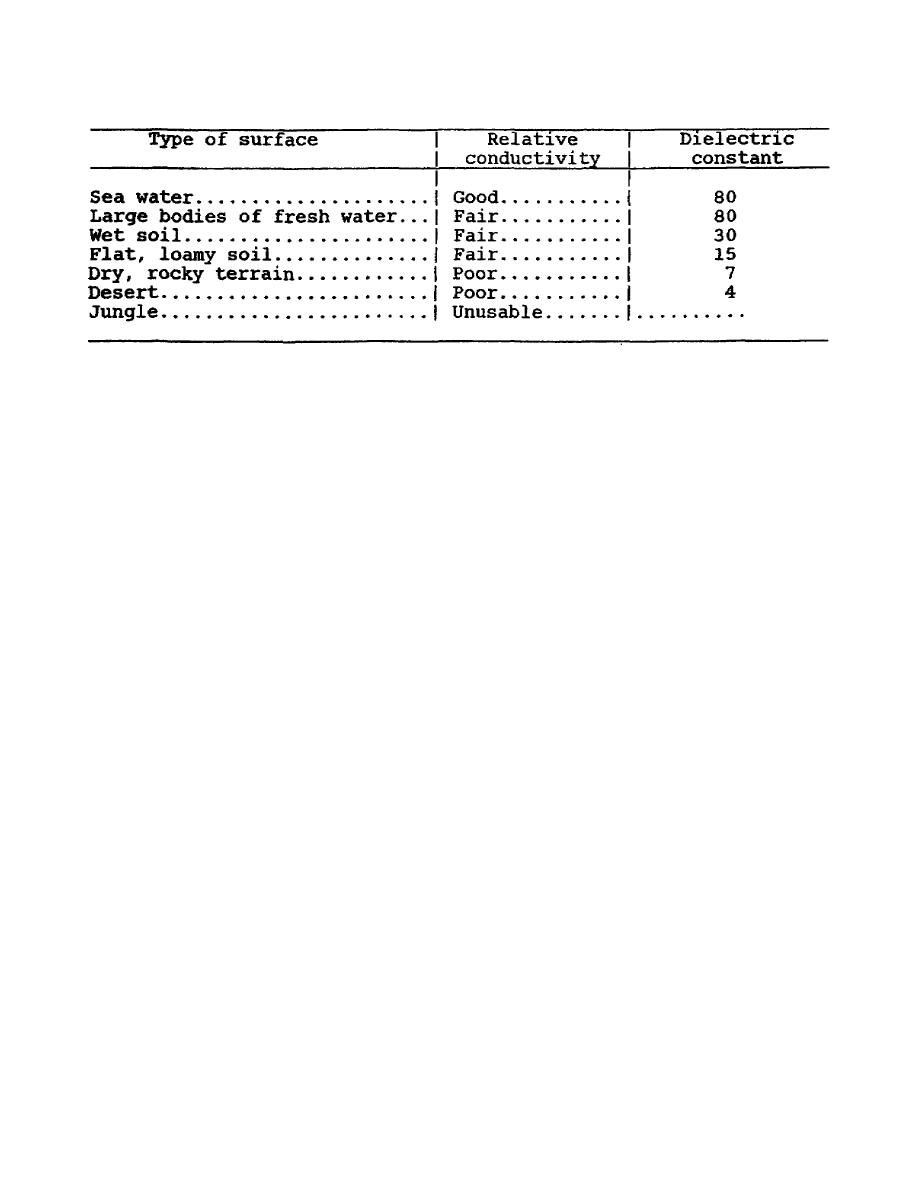
Table 3.
Propagation Characteristics of Local Terrain
b. The surface wave is transmitted as a vertically polarized
wave.
When using the surface wave, use a vertical antenna.
A
horizontal antenna transmits a horizontal wave which is short
circuited by the earth.
The better the type of local terrain, the
further the signal will travel and not be absorbed. The range of the
surface wave is determined by how powerful the transmitter is.
An
increase in power will increase the surface wave range. The range of
the surface wave is also affected by the terrain features it must
travel over.
9.
Frequency Characteristics of Ground Waves.
a. The frequency used will determine which component of the
ground wave will be used.
If the frequency is below 30 MHz the
surface wave will be used primarily. Between 10 and 30 MHz the local
terrain features will determine which component of the ground wave
will be used. At frequencies greater than 30 MHz the direct wave is
primarily used because the local terrain features absorb the surface
and ground reflected waves.
Above 30 MHz, vertical or horizontal
polarization may be used.
b. Frequency bands use certain components of the ground wave:
(1) The low frequency band (30 to 300 kHz) is used for moderate
distance ground wave communication.
A vertical antenna should be
used in the low frequency band. The radio wave follows the curvature
of the earth for several hundred miles.
(2) The medium frequency band (300 kHz to 3 MHz) is used for
moderate distance communication over land and for long distance
communication over sea water up to 1,000 miles.
11



 Previous Page
Previous Page
